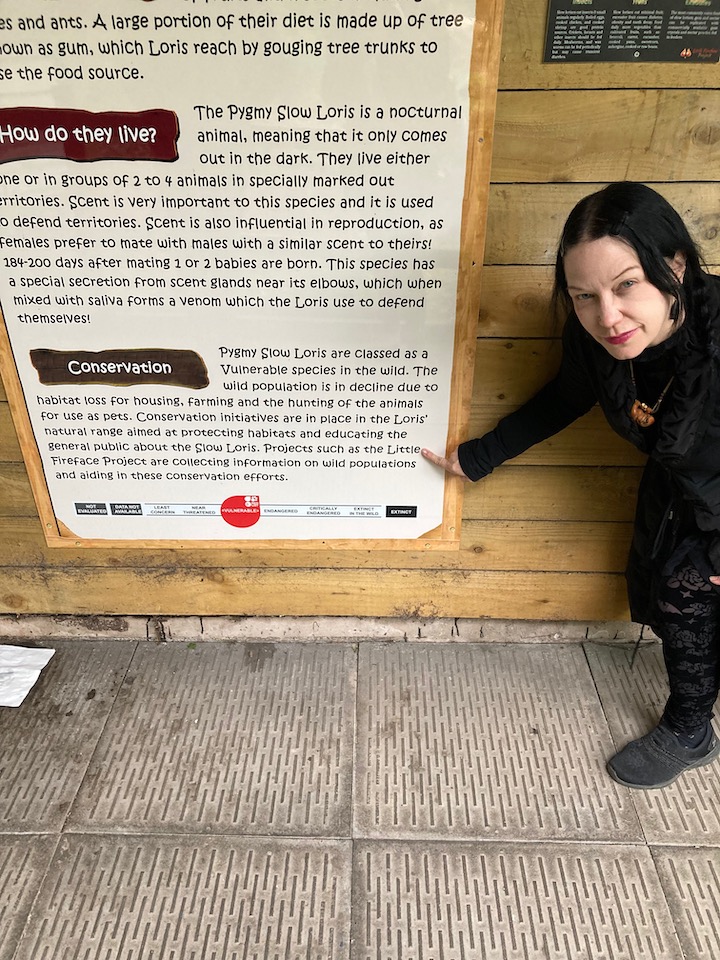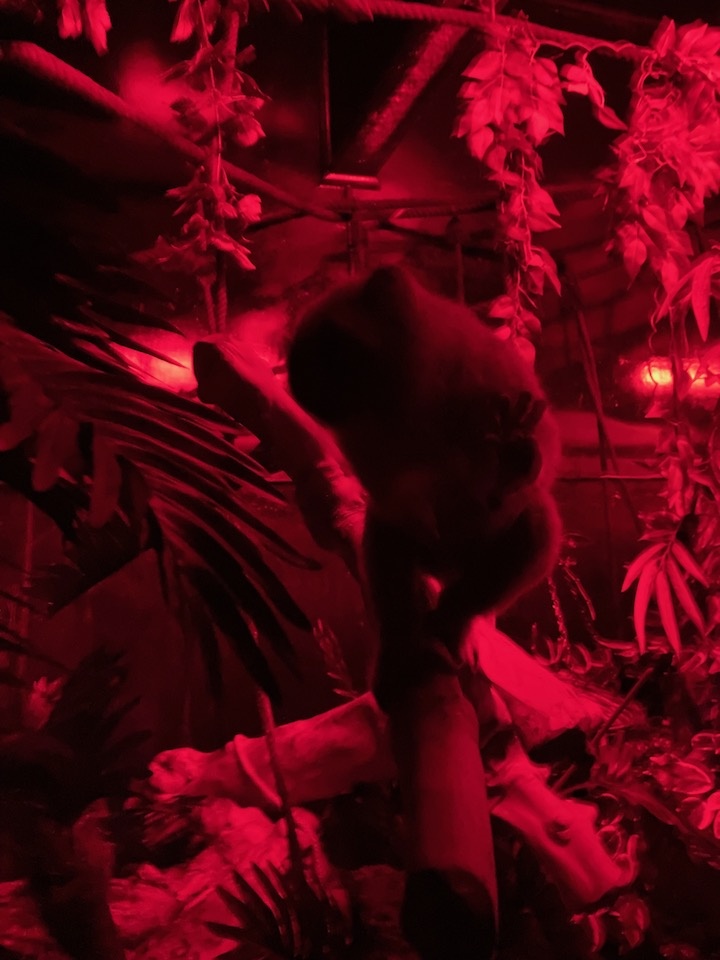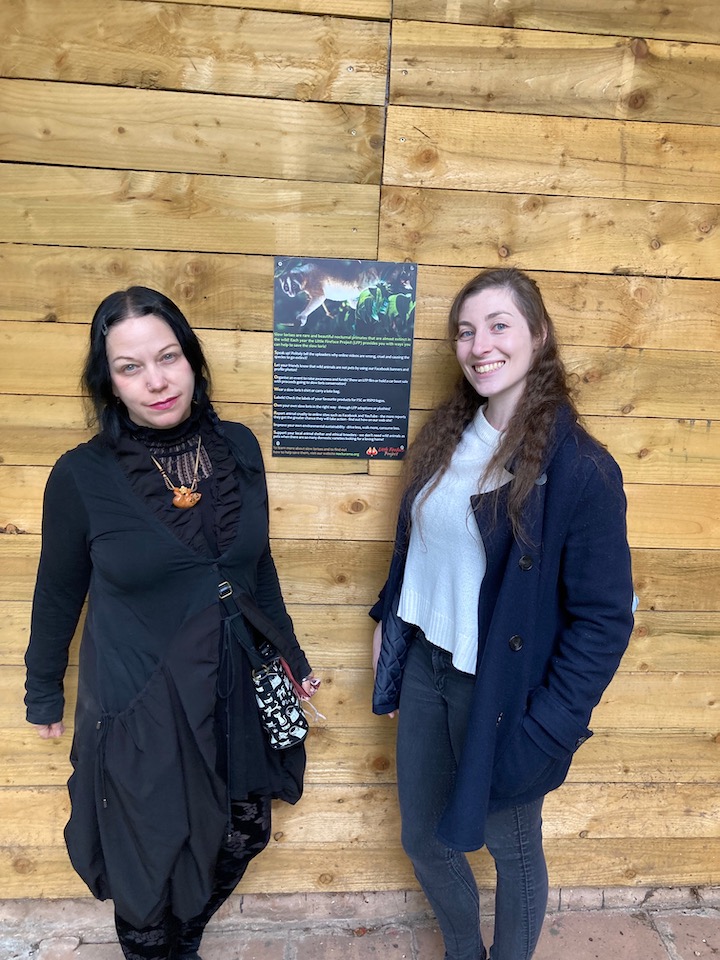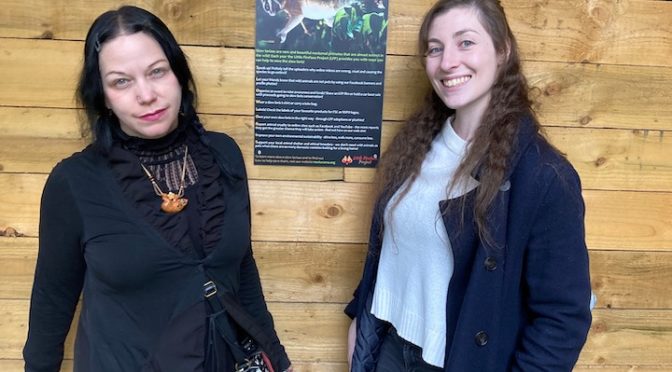2021 marks ten years of my running Little Fireface Project. Having started my research and conservation work on lorises in 1994 (you can read more about my work here), it was always a dream to have a long-term project and to REALLY learn about the life of these wonderful animals and to provide outreach materials and information so that others can do similar studies. A recent visit to the Birmingham Wildlife Conservation Park‘s loris conservation centre filled me with pride – to see many of the materials I had made on display and LFP used to highlight loris conservation. This inspired me to write this blog. It has been a rocky road, and we could not have accomplished all we have done without the support of many small grants from our funders and donations from our “friends”, and the use and display of our materials by conservation organisations worldwide, and in this blog I reflect on that.

Long-term studies do so many things. The presence of field researchers can serve as a kind of police for animals threatened by trade or hunting. Generations of students can work in an area that is well known and get excellent training in an organised location. Details of behaviour, such as life history including timing of births and deaths, become known as well as just random new behaviours that surprise you all the time! Or just “proving” some old concepts – like how much more normal and less stressed behaviours are seen when viewing lorises under red light!

It is incredible how so few animals in the world have been studied for the long-term, especially in the tropics. Indeed, in Africa and Asia most long-term studies are largely restricted to charismatic species such as lions, elephants and pandas. In terms of primates, these long-term studies are not only largely restricted to great apes, but most great apes have multiple long-term study sites, and the majority of primate conservation funding is poured into these sites. This creates a circular effect where new students only want to study apes, and the people who get jobs are also those who study apes.
People are often surprised to hear this because animals like slow lorises are “so cute” or “so cool – they are venomous after all!” But amazingly, myself a Professor of Primate Conservation for 20 years running a world-leading masters course, almost all student just go back to the apes, despite many primate species being hardly known at all.
Another problem of course is funding. To run a long-term project, we need to provide salaries, pay for the costs of housing, behavioural observation equipment, and veterinary costs, among many more. Conservation is renowned for students getting MSc or even PhD degrees and then having to volunteer for free in order to get a job. It is sad that protecting the planet on which we depend for all our lives is often one of the lowest paying jobs there is!
So how have we made it to ten years? I have been incredibly lucky to have LFP supported by a handful of donors who have been there from the very beginning, and through faith in our project, gave us small grants each year. These range from $250 per year to as much as £20,000. I would thus here like to give my heartfelt thanks, and thanks on behalf of the whole team, including our trackers who have supported their families largely on an LFP salary for many years, and our research assistants who gain valuable experience in conservation, to our annual funders: Cleveland Metroparks Zoo, People’s Trust for Endangered Species, Zoo Augsburg, International Primate Protection League, NaturZoo Rheine, and Shaldon Wildlife Trust. Through their commitment to LFP, the amazing staff at each of these charities can say that they have truly helped save a species from extinction. Many other organisations have contributed to LFP over the years too and you can see them all here.
I would also like to thank some unsung heroes and those are those long-term private people who have donated monthly to the Slow Loris Fund. These small donations amount to a single salary for on of our trackers each months – that is only about $150 – but it means so much and it means there is one less thing to worry about and the business of conservation slow lorises can continue! Also, all of those who have adopted a tree or a loris over the years have really helped to make our mission possible.

Of course the conservation fight is not about money alone – it is about awareness. And that is why on this web site and on our YouTube channel and on Oxford Brookes’ RADAR depository, we make outreach materials, films, and even raw data available to help organisations learn about lorises, to help students study them better, and to give those keeping them the knowledge to do so well. This was why it was such a huge pleasure to see the signs I worked so hard to make on display in Birmingham. Hopefully through that, many more people get to learn about the plight of the loris and maybe just a few more will become friends of Fireface to help us continue for another ten years!
Join us for more slow and slender loris conservation during Slow Loris Outreach Week (SLOW) 2021 – October 11-17! Watch this site for updates coming soon!

